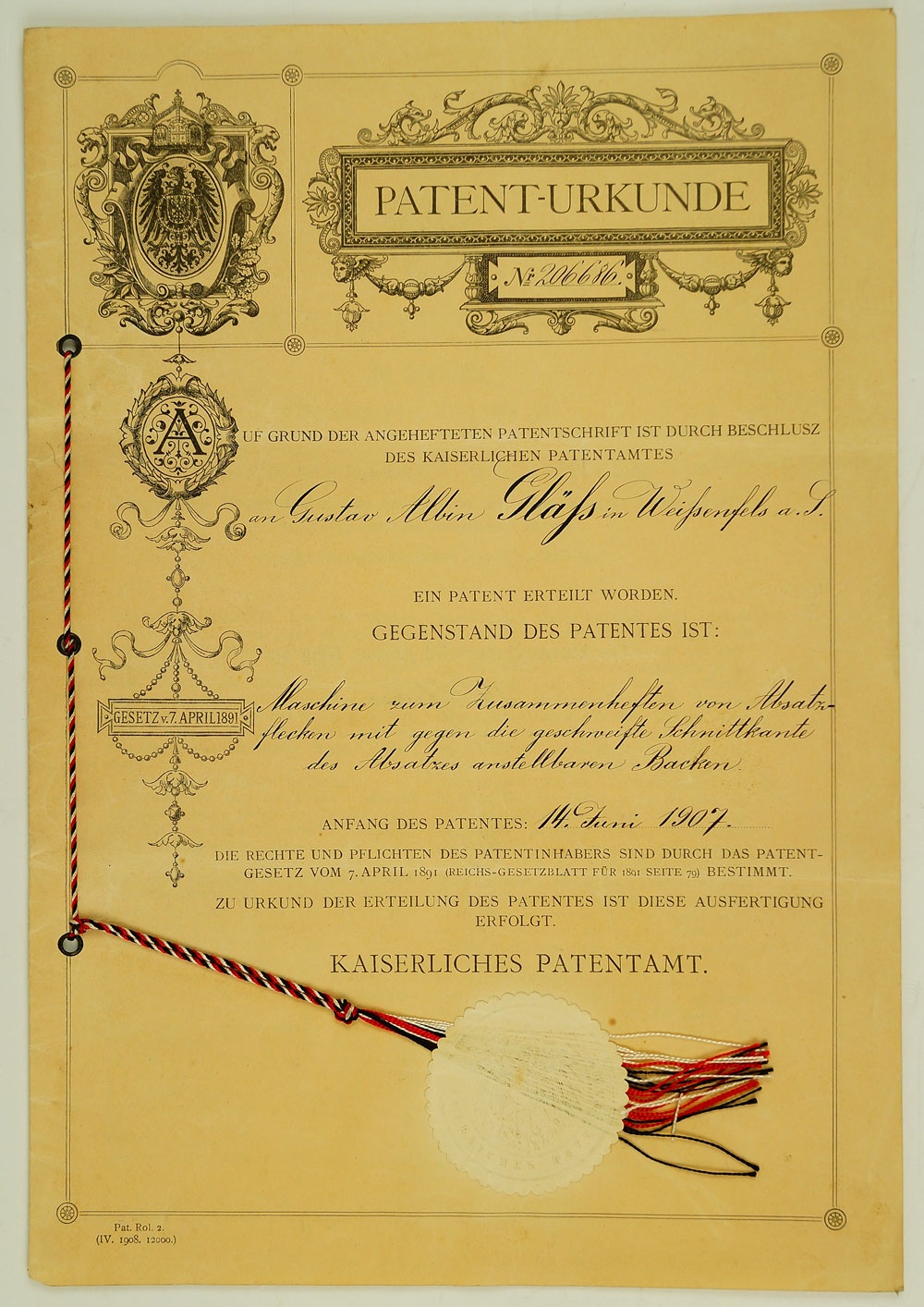Urkundenmappe aus Papier. Innen mehrseitige Patendschrift, sowie technische Zeichnung des Gegenstandes. Die Patenturkunde hat die Nummer 206686. Ausgestellt am 14. Juni 1907. Die Blätter sind gelocht und mit einen schwarz/weiß/roten gedrehten Faden. Das Ende ist mit einen papierenen Patentsiegel fixiert. Das Patent hat Gustav Albin Gläsz aus Weißenfels beantragt und wurde für "Maschine zum Zusammenheften von Absatzflecken mit gegen die geschweifte Schnittkante des Absatzes anstellbaren Backen".
en

